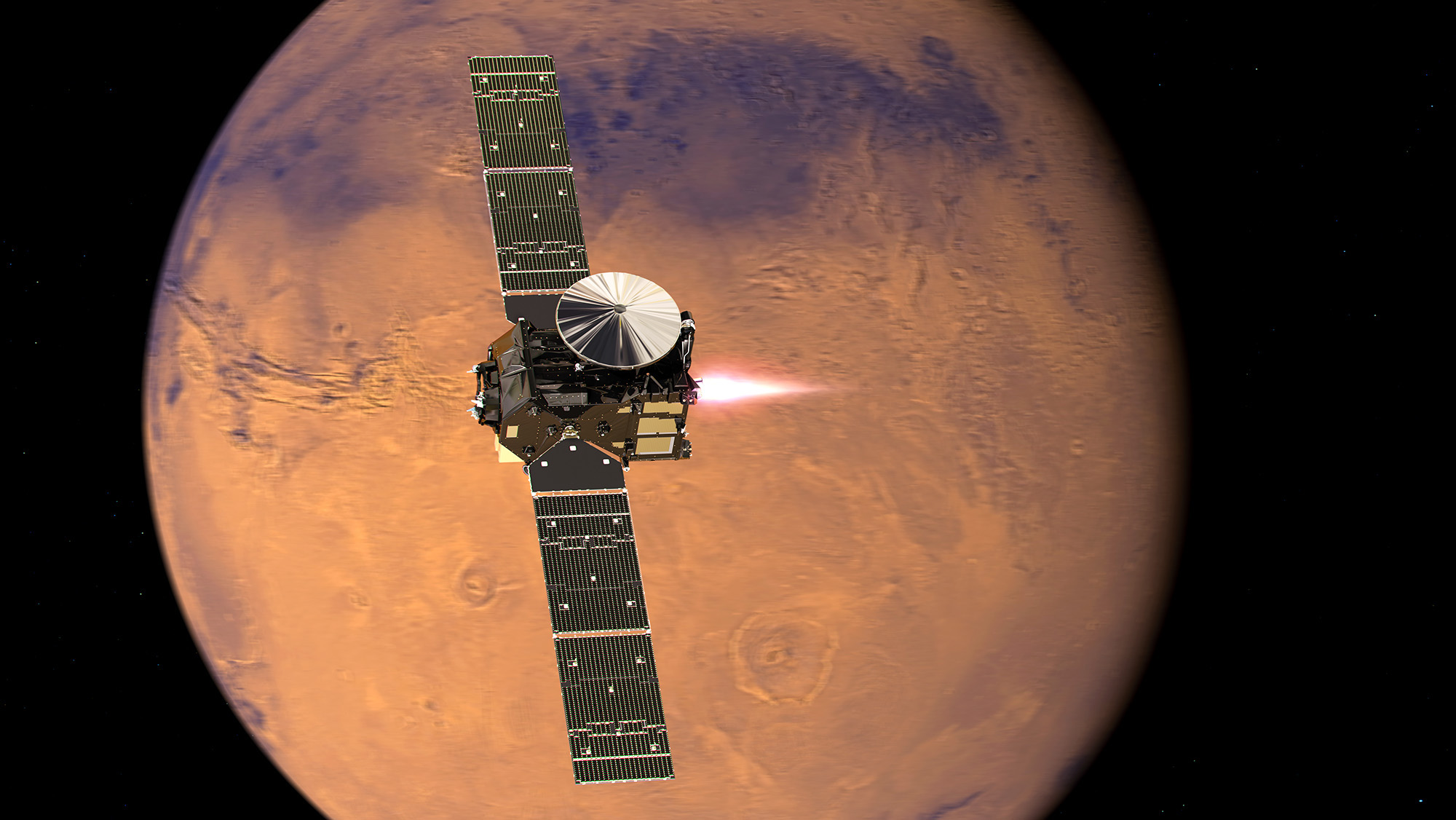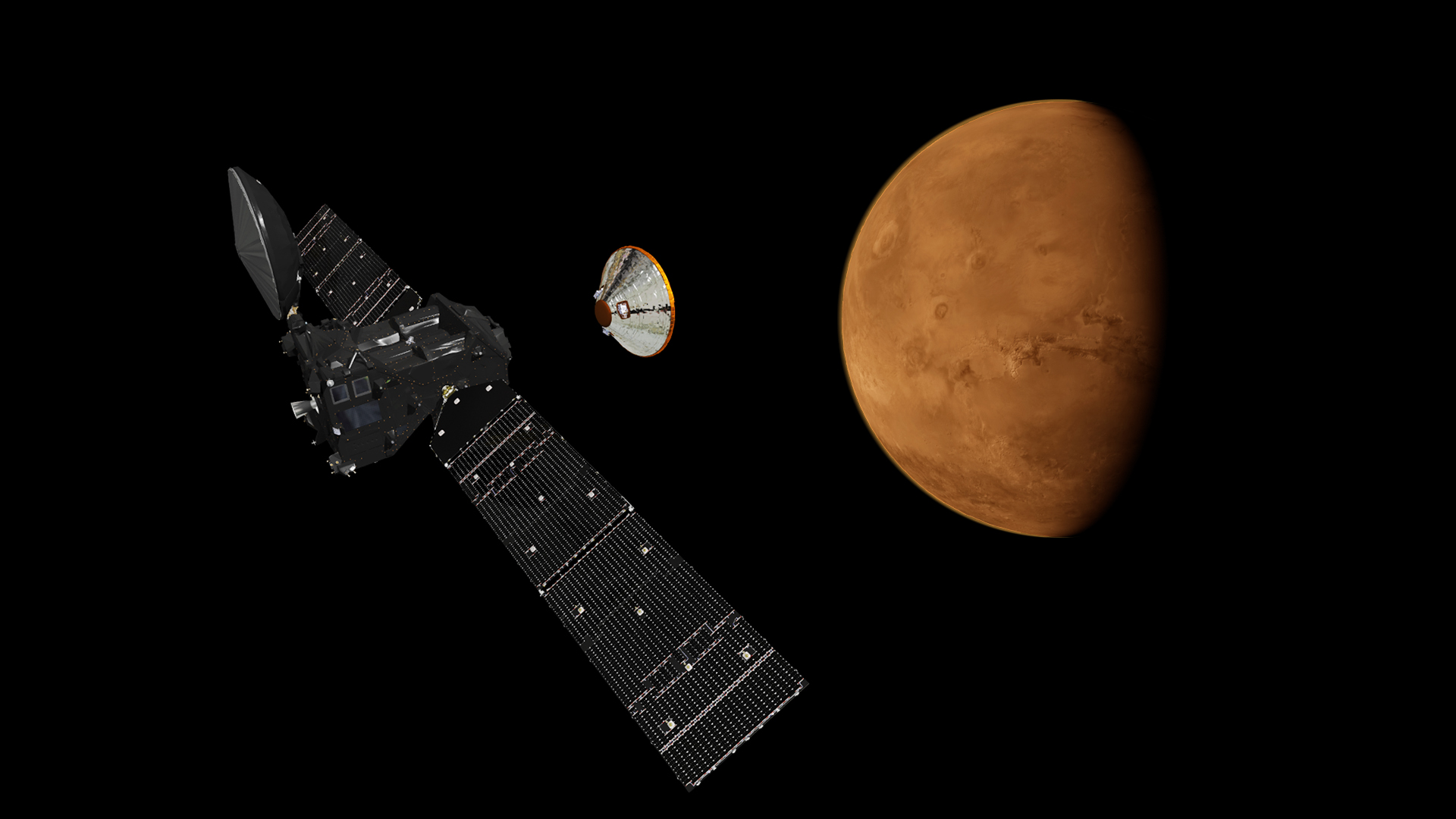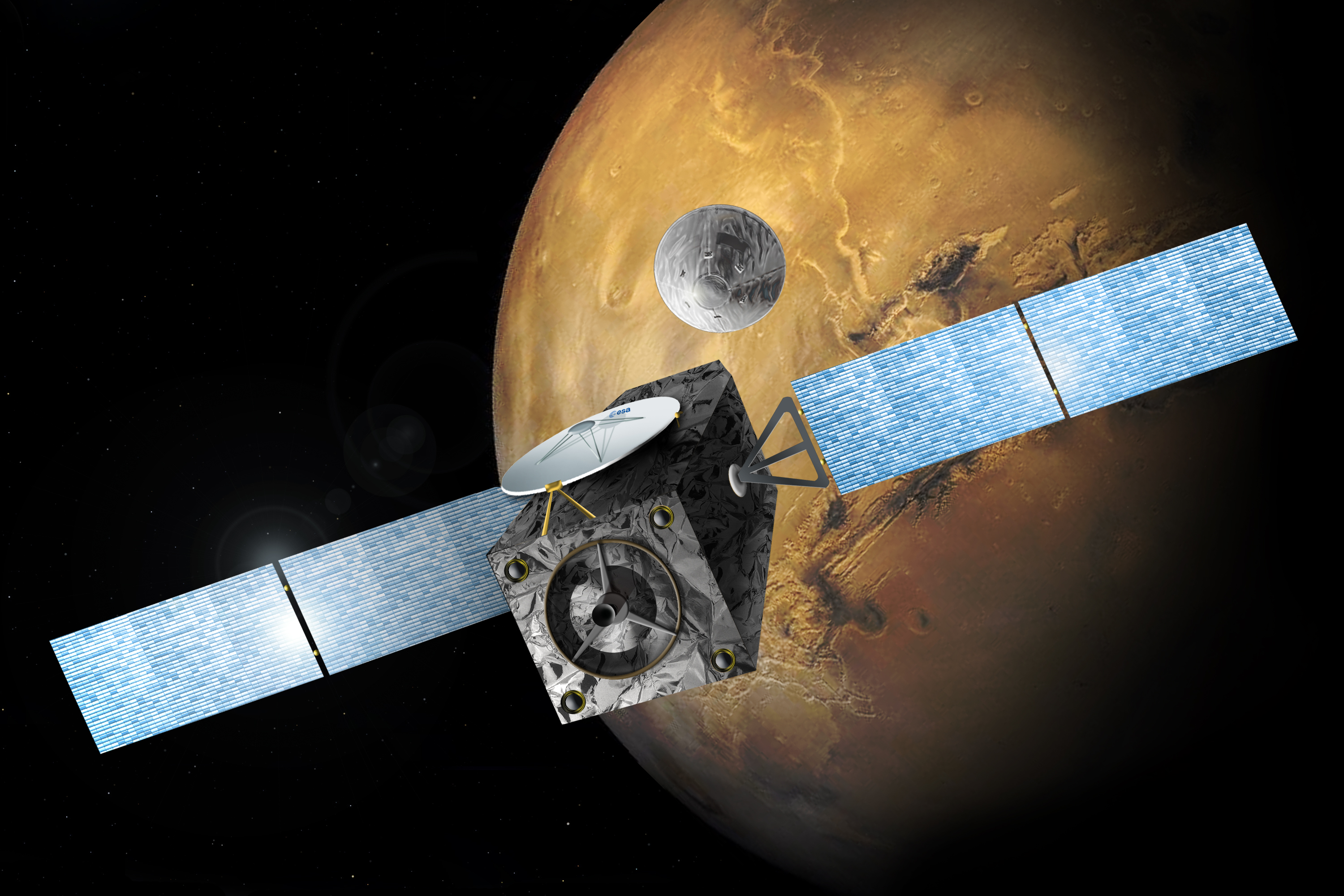
ExoMars approaching Mars
The Trace Gas Orbiter (TGO) of ESA’s ExoMars 2016 has successfully performed the long 139-minute burn required to be captured by Mars and entered an elliptical orbit around the Red Planet, while contact has not yet been confirmed with the mission’s test lander from the surface.
TGO’s Mars orbit Insertion burn lasted from 13:05 to 15:24 GMT on 19 October, reducing the spacecraft’s speed and direction by more than 1.5 km/s. The TGO is now on its planned orbit around Mars. European Space Agency teams at the European Space Operations Centre (ESOC) in Darmstadt, Germany, continue to monitor the good health of their second orbiter around Mars, which joins the 13-year old Mars Express.
The ESOC teams are trying to confirm contact with the Entry, Descent & Landing Demonstrator Module (EDM), Schiaparelli, which entered the Martian atmosphere some 107 minutes after TGO started its own orbit insertion manoeuvre.





